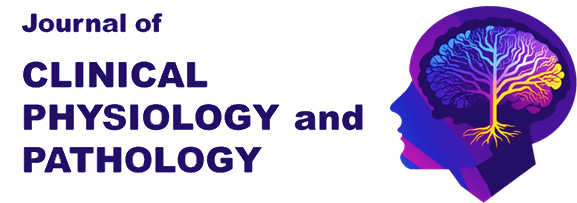Authors:
Alexandra Sentyabreva, Ekaterina Miroshnichenko, Ivan Tsvetkov, Anna Kosyreva
For citation:
Sentyabreva A., Miroshnichenko E., Tsvetkov I., Kosyreva A. Morphofunctional changes in brain and peripheral blood in aged Wistar rats due to AlCl3 exposure. Journal of Clinical Physiology and Pathology (JISCPP) 2023; 2 (4): 4-13.
Abstract:
The purpose of the study: To examine morphofunctional changes of brain and peripheral blood in aged Wistar rats to observe adaptive reactions as a response on AlCl3 exposure.
Methods: The work was performed on male Wistar rats, 24 months of age. Animals consumed a solution of AlCl3 100 mg/kg per day for 60 days. Morphological changes of neurons and microglia, mRNA expression levels of pro- and anti-inflammatory cytokines, microglia activation markers, amyloid-related and hypoxia-related proteins, as well as monocyte and lymphocyte subpopulations in peripheral blood, were examined.
Results: AlCl3-treated old rats showed the increasing of hyperchromic neurons in 2 out of 3 examined regions of the hippocampus; morphological features of microglia cells’ dystrophy; the upregulation of pro-inflammatory cytokine Il-18 and the downregulation of anti-inflammatory cytokine Il-10, as well as App, Bace1, and Hif-1a; the decreasing of percentage of B-cells, general CD3+ lymphocyte population, including CD4+ T-helpers and CD8+ cytotoxic cells, but the increasing of CD4+/CD8+ ratio in peripheral blood.
Conclusion: AlCl3-treated aged rats demonstrated systemic maladaptation to AlCl3 impact. Unlike adult rodents, aged ones have the background of inflammaging, as well as elderly people. The exposure of AlCl3 could potentially be a replacement of integral cellular and molecular processes accompanying age-related diseases, presenting in most elderly people, as an enhancer of inflammaging and hypoxia. These conditions make this model of neurodegeneration a reliable one to explore the initial mechanisms of such detrimental process, as well as prove aged rats more suitable subjects to perform future researches in this field.
Keywords:
aging, inflammaging, neuroinflammation, neurodegeneration, cellular senescence, age-related diseases, animal models, Alzheimer’s disease.
